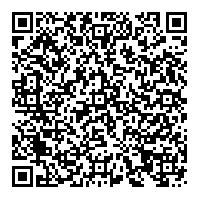It’s been 2-ish months since I posted to this blog, thinking about more of the conceptual and technical issues of building and maintaining my own domain. This hiatus wasn’t entirely coincidental, as anyone carefully reading my earlier posts (*crickets*) might have predicted. I love tinkering with technical stuff, and writing blog posts (which I’ve continued to do regarding my classes and scholarship)–to the point where I know it can become a distraction. As we hit the later stretches of the semester–and after the earlier portions had included more attention to web-building–I had to abandon what was fast becoming a favorite distraction, in favor of spending more time on classes, student work, etc.
But now, with the semester drawing to an end, I have a bit of the time and energy I’d like to have had all along. In addition, that sense of guilt that lurks if I’m not being “productive” has intersected with a mental state that isn’t particularly sharp and/or focused. All of which suggests an opportunity to have some fun before I dive back into some scholarship next week.
So a bit about what I’ve been doing.
Cohort discussions from Domain of One’s Own convinced me to do just a bit more with LinkedIn and Academia.edu, where I did have existing profiles but hadn’t developed a presence beyond the basics (name, graduate school, and an email address). I have since filled those profiles in with updated work histories, contact information, brief biographies, profile pictures, and CVs that are consistent with what I have posted on my personal domain, and where possible I’ve integrated my site with those profiles using the tools at “If This Then That.” Academia.edu seems not to be so compatible with these other networks (either I’m missing something, or this is a semi-hilarious reflection of academia as a wholly separate world).
Twitter seems to be the most productive in a professional sense, though a “noisy” space. I installed a widget on my top-level domain that displays my latest tweets, and tweets/broadcasts my latest blog posts, and I know several have been retweeted even by people/organizations I don’t know (the one about “rewilding” got picked up by some organization in Europe, for instance). I don’t do a ton of tweeting beyond that (occasional exchanges with colleagues/students who are there), but I do follow–and continue to add–a number of relevant professional organizations (AHA, OAH, NY History, American Antiquarian Society, MA Historical Society, Historic New England, Library of Congress, Common-Place, the American History Museum, Chronicle of Higher Education, Inside Higher Ed), and historians at other institutions (Ann Little, Jeff Wasserstrom, Joseph Adelman); this has alerted me to calls for papers, conference announcements, new publications/scholarship, and blog posts on teaching and other issues in higher education. I have dropped a few people/organizations that were not helpful, and sometimes just plain irritating (if I’m following somebody for professional reasons, I don’t want to know about a breakfast cereal spill).
I never managed to get TinyTinyRSS working to my satisfaction, and I had absolutely no luck getting it to sync with my mobile apps. However, in the thread that followed when I asked for suggestions, people were fans of Feedly, which I have up and running. I’ve been using it to follow a number of blogs–written by friends (historians, botanists, Germanists-turned-academic-skeptics/critics), colleagues (Will Mackintosh, Jeff McClurken), and sportswriters (hey, I’m allowed to have some fun).
I have also managed to get caught up filling in some pages on my top-level domain that were in place but neglected, including some actual information on my “History resources online” page (places to read some scholarship, local links of relevance, and professional organizations). More important and a bit more involved than that was getting some course-related material up in place. My first rudimentary work-around involved uploading files to Dropbox and including links on my own pages to take readers to those documents posted in my public Dropbox, the solution I’d landed on for getting a PDF of my CV posted a few months ago. Inelegant, but it did work. However, right around the time of the whole Heartbleed thing, something about this formula changed, and readers had to download rather than view the file within the browser, which wasn’t quite what I wanted. Plus, it relied on an outside service. But I remembered Jim Groom’s advice on plugins, which was essentially “Wait until you need something, then search for plugins that address that need.” I found BSK PDF Manager, installed and activated it, uploaded my CV and course syllabi, copied/pasted the short-code into the spot on my page (after a little reorganization to get that page set up more efficiently/attractively), and deleted the old links to Dropbox. And while I was at it (and trying to again escape some of my ties to Dropbox, which in my case is fairly easy to do since I’m not all that committed), I set up a subdomain and installed OwnCloud so I could host my own files, especially conference papers and other things I might want to access when I’m traveling.
And of course I worked on some blog posts–flamingos, books, and Alice Cooper.


